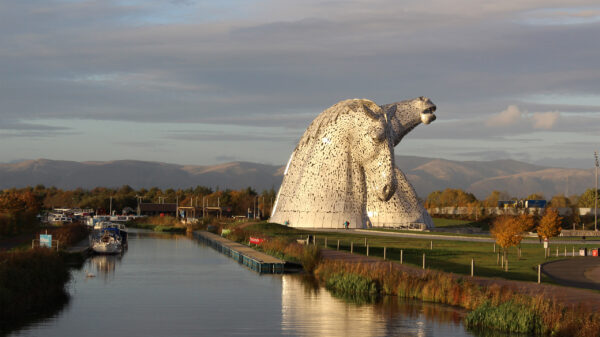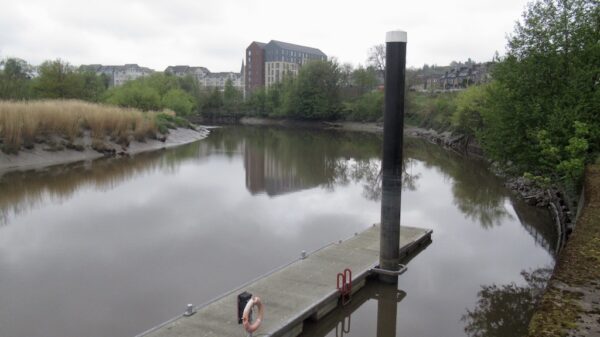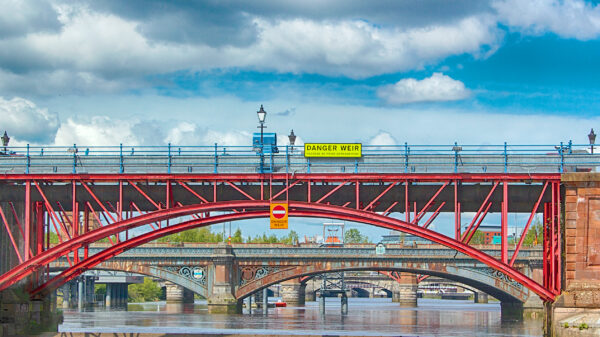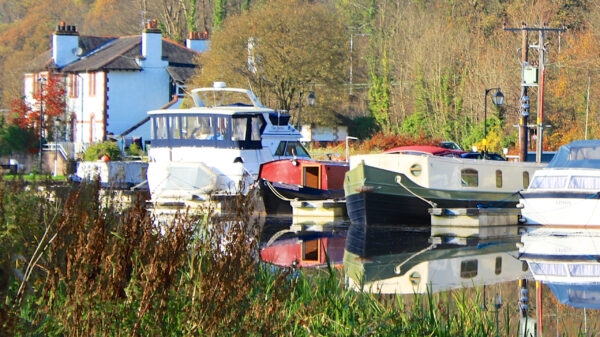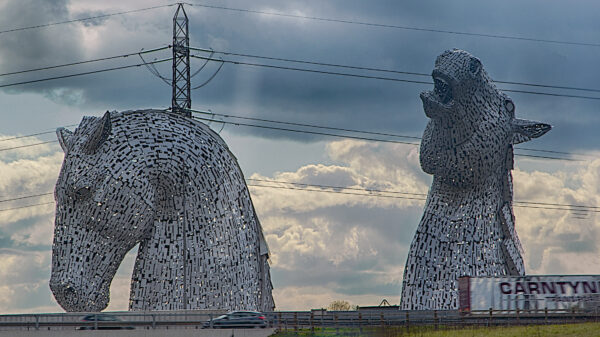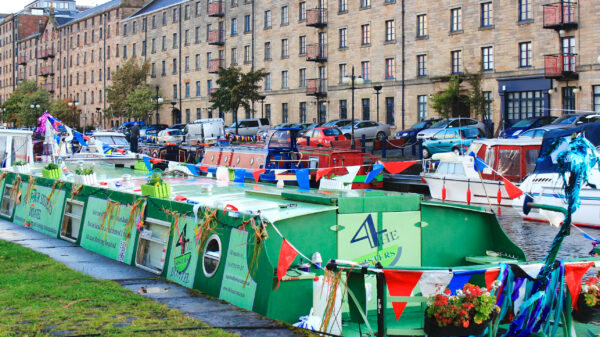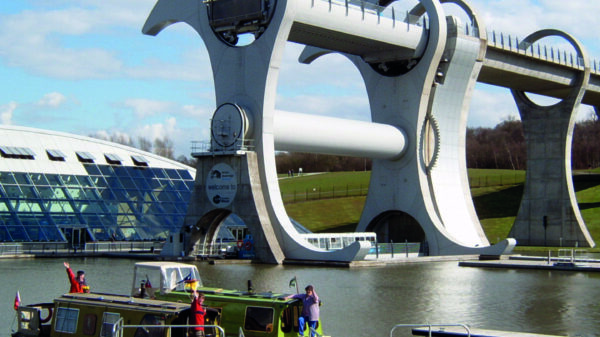From Bowling to Grangemouth
The Canal was opened in 1790 to link the Firth of Clyde and the Firth of Forth, and to provide a safe route for coasters during the war with France. Pleasure steamers used the canal from 1893 until the outbreak of World War II. The canal was closed in 1963 to facilitate road construction. With funding from a huge Millennium Lottery Fund grant, the Canal was reopened in 2001, all except for the easternmost length through Grangemouth, which was bypassed with a short link into the River Carron just west of the M9 motorway crossing. At Port Downie, a flight of eleven locks had linked the Canal to the Union Canal to Edinburgh but these were infilled in the 1930s. Replacing them is the Falkirk Wheel, the world’s first rotating boat lift, opened by Queen Elizabeth II in 2002.
Port Dundas Branch
Although the Glasgow Arm to Spiers Wharf was re-opened as part of the Millennium Link project, the basins at Port Dundas were not. A £5,700,000 project, planned by BW Scotland and Glasgow City Council, to reconnect Port Dundas with the rest of the canal was completed and formally reopened in September 2006 by former local MP and Speaker in the House of Commons, George Martin. However, the new lock (not included in the 40 mentioned above), has not been available for public use since then, and the potential to revitalise the area originally envisaged has yet to be realised.
Queen Elizabeth II Canal Link
Scotland’s newest canal section was built as part of the £43m Helix project. Along with the famous Kelpies sculptures, a 0.65 mile (1 km) length of new canal with a new Sea Lock was built to bypass the Millennium Link’s new connection into the River Carron, which had required boaters to navigate under the M9 motorway, the A905 Kerse Bridge and a pipe bridge. Both connections to the River Carron are now available for use.

